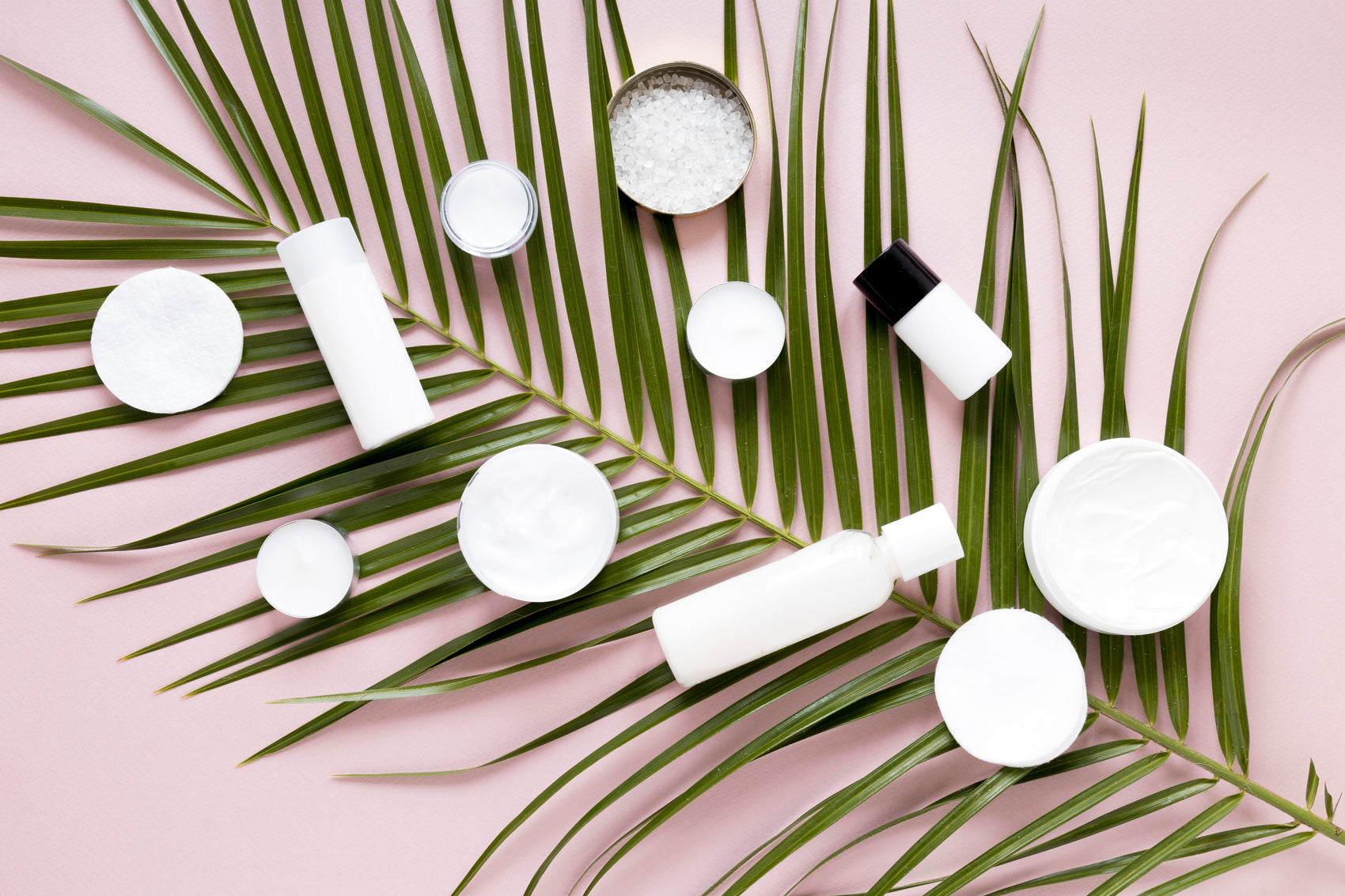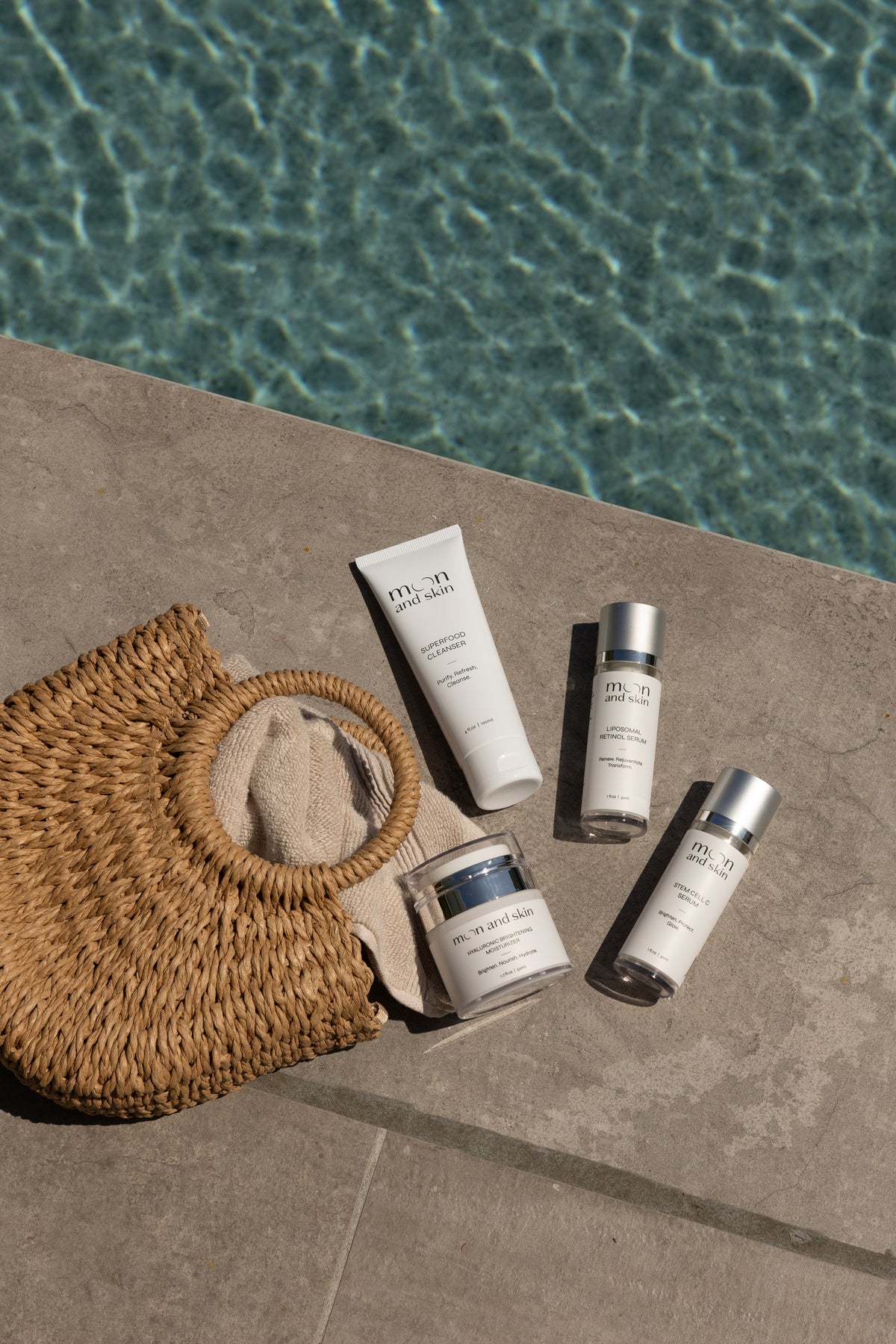Table of Contents
Introduction
Did you know that the outer layer of your skin is composed of approximately 30% water? This fact underscores the importance of hydration in maintaining healthy, radiant skin. However, many of us struggle with dry, dehydrated skin that feels tight and looks dull. We understand that navigating the world of skincare can be overwhelming, especially when you’re searching for quick solutions to hydrate your face. Whether it’s due to environmental factors, lifestyle choices, or the harsh effects of aging, hydration is key to restoring your skin's vitality.
Our mission at Moon and Skin is to provide clean and thoughtful skincare solutions that cater to every phase of life. In this blog post, we’ll explore effective strategies for hydrating your face quickly, incorporating our core products that align with our values of harmony with nature and education. Together, we'll break down the essentials of hydration, the ingredients to look for, and step-by-step methods for achieving a fresh, dewy complexion.
By the end of this post, you’ll have a comprehensive understanding of how to hydrate your face quickly and effectively, empowering you to make informed choices about your skincare routine.
Understanding Skin Hydration
The Importance of Hydration
Hydration is essential not only for our overall health but also for the health and appearance of our skin. Properly hydrated skin appears smoother, plumper, and more youthful. Dehydrated skin, on the other hand, can lead to a host of issues, such as fine lines, rough texture, and a lackluster complexion.
Signs of Dehydrated Skin
Recognizing the signs of dehydrated skin is the first step toward addressing the issue. Here are some common indicators:
- Dryness and Tightness: Your skin may feel tight, especially after cleansing.
- Flakiness: Dehydrated skin often shows signs of peeling or flaking.
- Dullness: A lack of hydration can result in a sallow appearance.
- Increased Sensitivity: Dehydrated skin can be more prone to irritation and redness.
- Fine Lines: Dehydration can accentuate fine lines and wrinkles, making them more noticeable.
Understanding these signs can help us identify when our skin needs extra care and hydration.
Quick Hydration Tips for Your Face
1. Start with a Hydrating Cleanser
To set the foundation for a hydrated complexion, begin with a gentle, hydrating cleanser. Avoid harsh soaps that strip natural oils. Instead, look for cleansers infused with hydrating ingredients like glycerin, ceramides, or hyaluronic acid. Our Superfood Cleanser is formulated with HydroProtein Technology to gently cleanse while nourishing your skin, making it an ideal choice.
2. Apply Hydrating Ingredients
Hyaluronic Acid
Hyaluronic acid is a superstar ingredient known for its ability to retain moisture. It can hold up to 1,000 times its weight in water, making it a must-have in your skincare routine. Look for serums or moisturizers that feature hyaluronic acid prominently.
Glycerin
Often overshadowed by hyaluronic acid, glycerin is another effective humectant that attracts moisture to the skin. It penetrates deeply and helps keep skin hydrated. Incorporating products that contain glycerin can significantly improve skin hydration levels.
3. Use a Hydrating Serum
Serums are concentrated formulations designed to deliver powerful ingredients directly to the skin. Our Stem Cell C Serum not only brightens and hydrates but also provides antioxidant protection. Apply it after cleansing to infuse your skin with hydration.
4. Lock in Moisture with a Rich Moisturizer
After applying a serum, follow up with a rich moisturizer to seal in hydration. Look for moisturizers that contain occlusive agents like shea butter or squalane, which help create a barrier on the skin and prevent moisture loss. Our Hyaluronic Brightening Moisturizer is formulated with hyaluronic and kojic acid to deeply hydrate and brighten your skin, making it an excellent choice for this step.
5. Consider Facial Oils
For an extra boost of hydration, consider adding a facial oil to your routine. Oils like jojoba, argan, or rosehip not only provide moisture but also contain essential fatty acids that nourish and protect the skin. Apply a few drops after your moisturizer for maximum benefits.
6. Implement the Slugging Technique
Slugging involves applying a thin layer of an occlusive agent, such as petroleum jelly, over your moisturizer to lock in moisture overnight. This technique can be especially beneficial for those with extremely dry skin. Just be cautious if you are prone to breakouts, as it may not suit every skin type.
7. Stay Hydrated Internally
While topical hydration is crucial, don’t underestimate the importance of internal hydration. Drinking plenty of water throughout the day helps support overall skin health. Aim for at least 8 glasses of water daily to ensure your body—and skin—stays hydrated.
8. Incorporate Hydrating Foods
Your diet plays a significant role in skin hydration. Foods rich in water content, like cucumbers, watermelon, and oranges, can help keep your skin hydrated from the inside out. Additionally, omega-3 fatty acids found in fish and nuts can strengthen your skin's moisture barrier.
9. Use a Humidifier
Dry air can sap moisture from your skin, especially in colder months or in air-conditioned environments. Using a humidifier at home adds moisture back into the air, which can significantly benefit your skin’s hydration levels.
10. Avoid Hot Showers
While a hot shower may feel relaxing, hot water can strip your skin of its natural oils. Opt for lukewarm water instead, and limit your shower time to prevent excessive dryness.
11. Don’t Skip Sunscreen
Sunscreen is essential for protecting your skin from harmful UV rays, which can lead to moisture loss and premature aging. Choose a broad-spectrum sunscreen with at least SPF 30 and apply it daily, even when it’s cloudy.
12. Consider a Hydrating Face Mask
A hydrating face mask can provide an instant boost of moisture. Look for masks that contain hyaluronic acid, aloe vera, or glycerin. You can also try our Try Before You Buy collection to experience our products firsthand.
13. Use a Hydrating Mist
Keep a hydrating facial mist on hand for a quick refresh throughout the day. A spritz can instantly hydrate your skin and soothe any tightness or dryness.
14. Prioritize Sleep
Quality sleep is vital for skin health. Aim for 7-9 hours of sleep each night to allow your skin to repair and rejuvenate. Lack of sleep can lead to increased dryness and dullness.
Building a Complete Hydration Routine
To achieve optimal hydration, it’s essential to develop a consistent skincare routine that incorporates these steps. Here’s a simple outline for your daily hydration regimen:
- Cleanse: Use a hydrating cleanser to remove impurities without stripping moisture.
- Hydrate: Apply a hydrating serum packed with hyaluronic acid or glycerin.
- Moisturize: Follow up with a rich moisturizer to lock in hydration.
- Seal: For extra hydration, layer a facial oil or use the slugging technique overnight.
- Protect: Always finish with sunscreen during the day.
To simplify your routine, consider our Bundle & Save collection, which offers our best-selling products at a great value.
Conclusion
Hydrating your face quickly is achievable with the right products and practices. By understanding the importance of hydration and implementing these strategies, you can restore your skin’s natural moisture and achieve a radiant complexion. Remember, skincare is a journey, and we’re here to support you through every phase of it.
If you’re ready to take the next step in your skincare routine, try our Best Sellers collection to find trusted products that will help you maintain hydrated and healthy skin.
FAQ
Q: How often should I hydrate my skin? A: Hydration should be a part of your daily skincare routine. Use hydrating products morning and night for the best results.
Q: Can I hydrate my skin from the inside out? A: Yes! Drinking plenty of water and consuming hydrating foods can significantly improve your skin’s hydration levels.
Q: What is the best way to hydrate dry skin? A: The best way to hydrate dry skin is to use a combination of hydrating cleansers, serums, and occlusive moisturizers, along with a consistent skincare routine.
Q: Is it necessary to use a facial oil? A: While not necessary for everyone, facial oils can provide an additional layer of hydration and nourishment, especially for those with dry skin.
Q: How can I tell if my skin is dehydrated? A: Signs of dehydrated skin include dryness, tightness, flakiness, dullness, and pronounced fine lines. Regularly checking in with your skin can help you identify its hydration needs.







